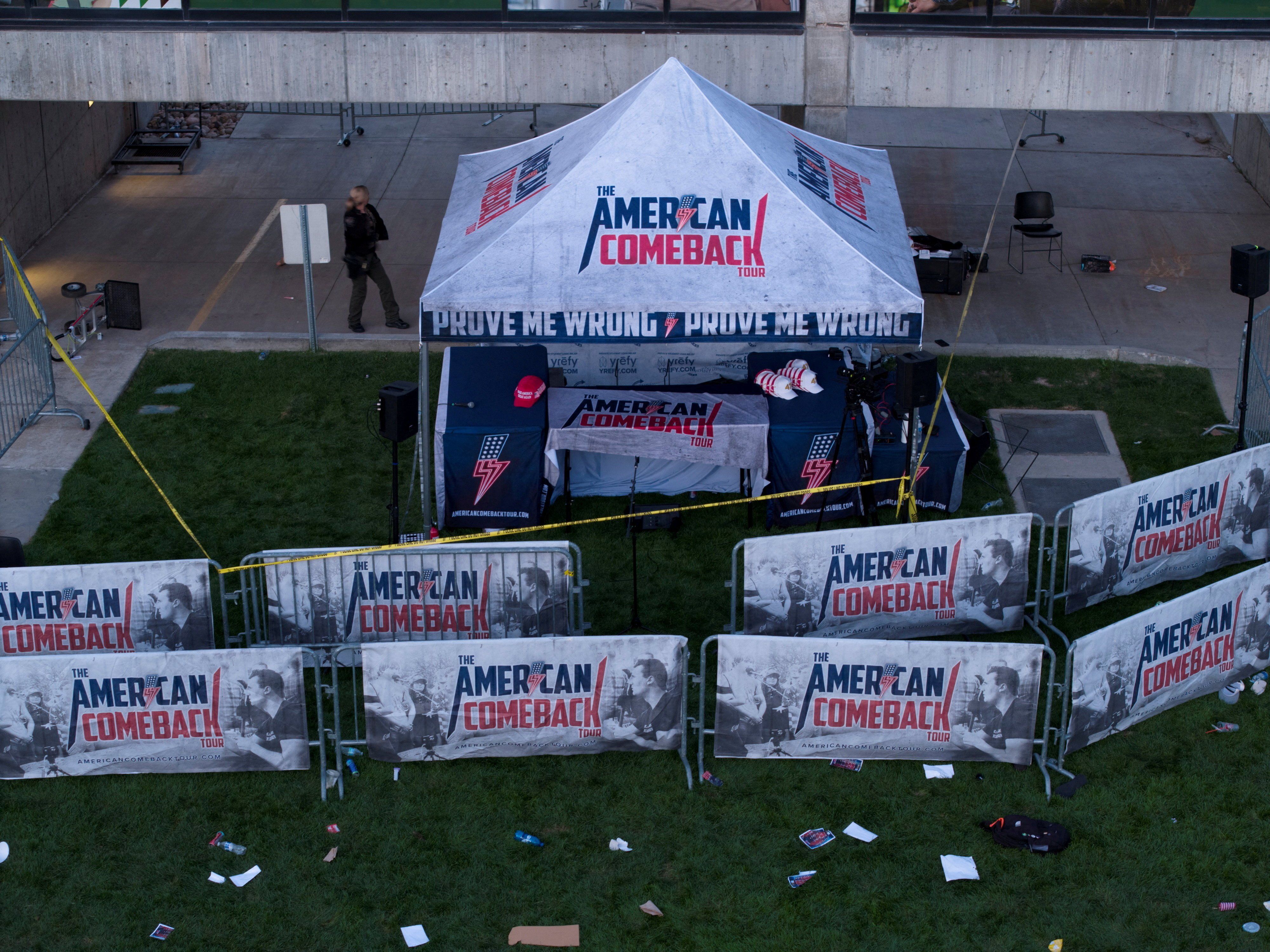The assassination of 31-year old conservative activist Charlie Kirk at a college event in Utah yesterday threatened to plunge a deeply divided America further into a cycle of rising political violence.
Who was Charlie Kirk? The founder of Turning Point USA, a conservative youth organization active on more than 3,500 college campuses. Kirk built his formidable brand by challenging students, in particular liberals, to open debates on hot-button culture war issues.
An ultra-conservative Evangelical Christian, he advocated for values of faith, family, and patriotism. He held divisive views on race, women in the workplace, gun control, and gay marriage.
A titan in the MAGA movement. Kirk’s outreach to young voters is considered a major reason why Donald Trump won 56% of young male voters in the 2024 election.
The manhunt: The shooter remains on the loose, and nothing is known about their background or motivations. A weapon and other evidence were reportedly recovered near the scene of the killing on Thursday morning.
The context: Violence against prominent political figures is becoming more commonplace in America, and it affects both sides of the political divide. Earlier this year, the Democratic governor of Pennsylvania, Josh Shapiro, survived an arson attack. Two months later, two Democratic state lawmakers in Minnesota were assassinated. Last year, of course, there were two separate attempts on Donald Trump’s life. A recent Marist poll found that 73% of Americans see political violence as a major problem.
The White House response: a crackdown on “the left”? In a four minute special address from the White House, President Trump eulogized Kirk and condemned radicalism and violence. He blamed “the left” – pledging to “find each and every one of those who contributed to this atrocity, and to other political violence, including those who fund it.” This framing has raised concerns in some quarters about a possible wider crackdown on ideological opponents of the White House.
Most politicians on both sides condemned the killing but tensions simmered beneath the surface. Congress erupted into a shouting match over GOP leader Mike Johnson’s call for a moment of silence for Kirk on the same day as a school shooting that went largely unmentioned. Many prominent MAGA influencers and supporters of Trump responded with outrage, blaming Democrats or liberals for the killing, and claiming Kirk as a martyr.
Some Democrats responded to Kirk’s murder with calls for more gun control. But Eurasia Group US expert Noah Daponte-Smith says those are unlikely to make headway. Kirk himself was a staunch opponent of tighter gun laws, once declaring, in typically controversial style, “it’s worth the cost of, unfortunately, some gun deaths every single year so that we can have the Second Amendment to protect our other God-given rights.”
Are things about to get worse? Daponte-Smith says that while an escalatory cycle can certainly still be avoided,
“there is a higher potential for more political violence.”
